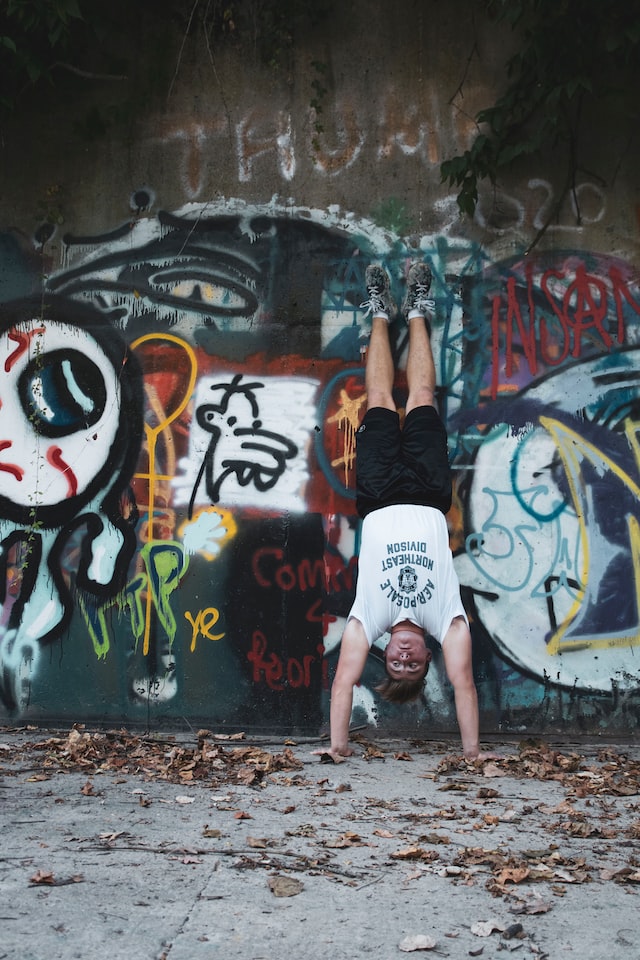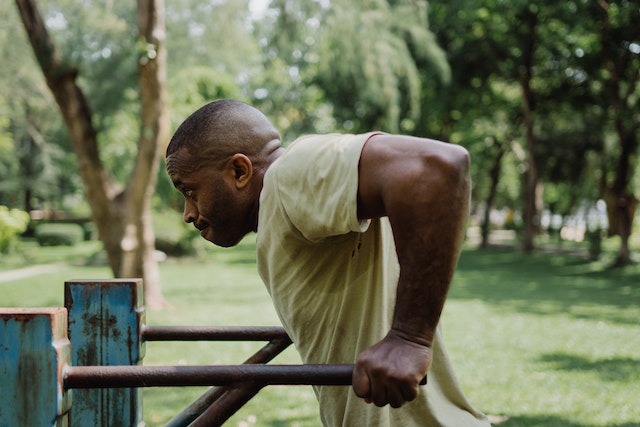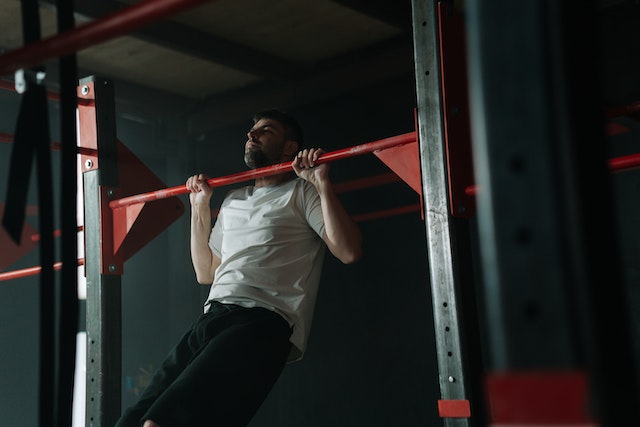Are you looking for a fun and challenging new addition to your calisthenics routine? Look no further than the humble handstand against the wall. Not only is this exercise a great way to show off your skills and impress your friends, but it also comes with a host of benefits for your body and mind.
In this article, we’ll take you through everything you need to know to master the handstand against the wall. We’ll cover the benefits of the exercise, how to prepare your body for it, step-by-step instructions for the movement, and tips for troubleshooting common mistakes and improving your technique. Plus, we’ll throw in a bit of humor to keep things light and fun.
Whether you’re a seasoned calisthenics pro or a beginner looking to take your skills to the next level, this guide is for you. So grab your mat, find a wall, and let’s get upside down!
Benefits of Handstand Against the Wall
Handstand against the wall is not just an impressive-looking skill, but it also comes with a host of benefits for your body and mind. Here are some of the most significant benefits of incorporating this exercise into your calisthenics routine:
Increased upper body strength
When you’re performing a handstand against the wall, you’re supporting your entire body weight through your arms and shoulders. This means that with regular practice, you’ll develop significant upper body strength and muscular endurance.
Improved balance
Handstands require a great deal of balance, and practicing them against the wall can help you improve your balance and stability. As you get more comfortable with the exercise, you can start to experiment with balance variations and progress to freestanding handstands.
Enhanced body awareness
Handstands require a high degree of body awareness and control. By practicing this exercise regularly, you’ll develop a better understanding of how your body moves and how to control it, which can carry over to other areas of your life.
Increased confidence
Let’s face it, there’s something inherently empowering about being able to hold yourself upside down. Practicing handstand against the wall can help you build confidence in your body and your abilities, which can translate to other areas of your life.
In addition to these benefits, handstand against the wall is also a fun and challenging way to break up your routine and add some variety to your workouts. So the next time you’re looking to spice things up, give the handstand against the wall a try!
Preparing for Handstand Against the Wall
Before you attempt a handstand against the wall, it’s essential to properly warm up and stretch your body. This will help prevent injury and prepare your muscles and joints for the demands of the exercise.
Here are some tips and exercises to help you prepare your body for handstand against the wall:
Warm up
Start by warming up your entire body with some light cardio, such as jogging or jumping jacks. You can also do some dynamic stretching, such as arm circles, leg swings, and spinal twists, to get your blood flowing and loosen up your muscles.
Stretch your shoulders, wrists, and hips
Handstand against the wall requires a lot of shoulder and wrist mobility, so it’s crucial to stretch these areas before you start. Some good stretches to include are shoulder circles, wrist rotations, and hip openers.
Strengthen your core
A strong core is essential for maintaining proper form during handstand against the wall. Some good exercises to strengthen your core include plank variations, hollow body holds, and leg raises.
Practice wall walks
Before attempting a full handstand against the wall, practice wall walks to get comfortable with the movement. Start by standing facing the wall and walking your feet up the wall until your body is at a 45-degree angle. Hold this position for a few seconds, then walk your feet back down. Repeat this several times until you feel comfortable with the movement.
Use a spotter
If you’re new to handstand against the wall, it can be helpful to have a friend or partner spot you. They can help support your legs and guide you into the proper position, which can give you more confidence as you work on the movement.
By following these tips and exercises, you can properly prepare your body for handstand against the wall and reduce the risk of injury. So take your time, listen to your body, and don’t rush the process. With practice and patience, you’ll be nailing those handstands in no time!
Step-by-Step Guide to Handstand Against the Wall
Now that you’re warmed up and ready to go, it’s time to learn how to do a handstand against the wall. Here’s a step-by-step guide to help you master the movement:
- Start in downward dog position: Begin by coming into downward dog, with your hands and feet on the ground and your hips lifted up towards the ceiling. Walk your feet in towards your hands until you can comfortably bring one foot up to the wall.
- Kick up: From downward dog, bring one foot up to the wall, with your toes pointing towards the ceiling. As you kick your other foot up towards the wall, use your hands to balance and support your body. You may need to do this a few times before you feel comfortable with the movement.
- Find your balance: Once you’re in a handstand position, use the wall for support as you work on finding your balance. Keep your arms and legs straight, and engage your core to maintain proper form.
- Hold the pose: Aim to hold the handstand position for at least 10-15 seconds, or longer if you can. Focus on keeping your body in a straight line from your toes to your fingertips and using your core to maintain your balance.
- Come down: When you’re ready to come down, slowly lower one foot at a time back to the ground, using the wall for support if needed. You can then rest in child’s pose or downward dog before attempting the movement again.
Here are some additional tips to keep in mind as you practice handstand against the wall:
- Don’t be afraid to use the wall for support as you work on finding your balance.
- Engage your core and keep your body in a straight line to maintain proper form.
- Practice regularly, but don’t push yourself too hard. Listen to your body and take breaks when you need to.
- Remember to breathe and stay calm. Handstands can be intimidating, but with practice, you’ll get the hang of it.
To help clarify the instructions, it can be helpful to include illustrations or images of each step. You can also consider including a video tutorial to help your readers visualize the movement.
Troubleshooting Common Mistakes
Handstand against the wall can be a challenging movement, and it’s common to make mistakes as you’re learning. Here are some of the most common mistakes people make, and how to overcome them:
Arching the back
One of the most common mistakes is to arch the back instead of keeping the body in a straight line. This can make it harder to balance and increase the risk of injury. To fix this, focus on engaging your core and keeping your body in a straight line from your toes to your fingertips.
Bending the arms
Another mistake is to bend the arms instead of keeping them straight. This can make it harder to balance and reduce the effectiveness of the movement. To fix this, focus on keeping your arms straight and using your shoulder blades to stabilize your upper body.
Not using the wall
It’s common to try to do a handstand without using the wall for support, which can make it harder to balance and increase the risk of injury. To fix this, use the wall for support as you work on finding your balance, and don’t be afraid to come down if you start to lose control.
Not warming up properly
Skipping the warm-up can increase the risk of injury and make it harder to perform the movement correctly. To fix this, make sure to warm up properly before attempting the handstand, and include exercises that target the upper body, core, and hips.
Not practicing regularly
Handstand against the wall requires practice and patience to master, and not practicing regularly can slow your progress. To fix this, make sure to practice regularly, even if it’s just for a few minutes a day.
By keeping these common mistakes in mind and using the tips and solutions provided, you can overcome the challenges of handstand against the wall and master this impressive movement. Remember to be patient and persistent, and don’t be afraid to seek the help of a coach or trainer if you’re struggling to make progress.
Tips for Progression and Improvement
Once you’ve mastered the basics of handstand against the wall, there are many ways to progress and challenge yourself. Here are some additional exercises and tips to help you improve:
Practice freestanding handstands
Once you’re comfortable with handstand against the wall, you can start practicing freestanding handstands. This requires more strength and balance, but it’s a great way to challenge yourself and improve your overall fitness.
Try one-arm handstands
For a truly impressive feat, try practicing one-arm handstands. This requires even more strength and balance, but it’s a great way to take your handstand practice to the next level.
Use wrist weights
Wrist weights can help build strength and endurance in your wrists, which are critical for maintaining balance in handstand against the wall. Start with light weights and gradually increase the load over time.
Incorporate yoga poses
Many yoga poses, such as downward-facing dog and crow pose, can help improve your handstand practice by building strength and improving flexibility. Incorporate these poses into your regular practice to see improvements.
Engage your legs
While handstand against the wall is primarily an upper body exercise, engaging your legs can help improve your balance and stability. Focus on squeezing your inner thighs together and pointing your toes for a more controlled and stable handstand.
By incorporating these tips and exercises into your handstand practice, you can continue to progress and challenge yourself, and achieve even greater levels of strength and balance. Remember to always listen to your body and progress at your own pace, and don’t be afraid to seek the help of a coach or trainer if you need additional guidance.
Final thoughts
Congratulations, you’ve now learned how to do a handstand against the wall! By following the step-by-step guide, you can safely and effectively practice this impressive movement and reap the many benefits it offers. From increased upper body strength and improved balance, to enhanced body awareness and mindfulness, handstand against the wall is a great addition to any calisthenics routine.
Remember to always warm up properly and listen to your body, progressing at a pace that feels comfortable for you. And don’t forget to have fun with it! Practicing handstand against the wall can be a challenging and rewarding experience, and with patience and persistence, you can continue to improve and achieve new heights. So keep practicing, keep challenging yourself, and enjoy the journey towards mastering this impressive movement.






